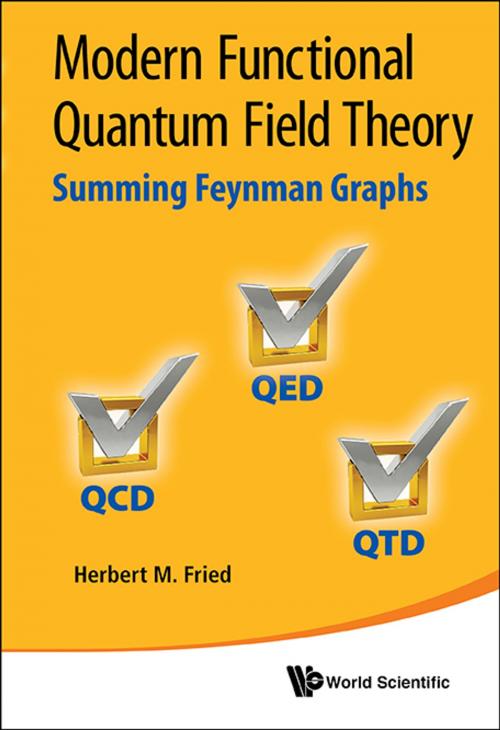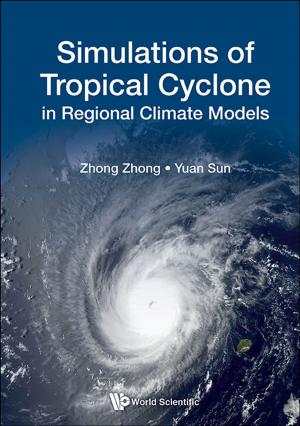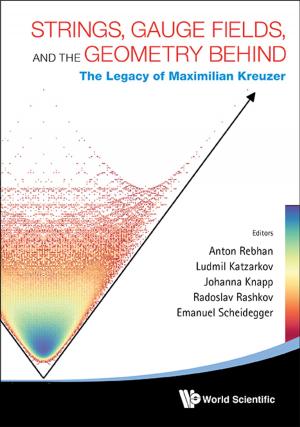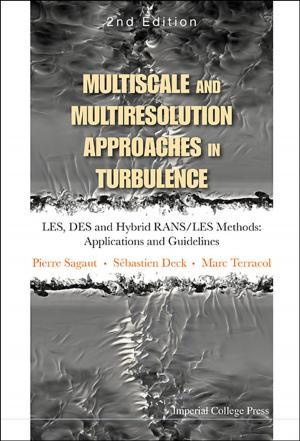Modern Functional Quantum Field Theory
Summing Feynman Graphs
Nonfiction, Science & Nature, Science, Physics, Mathematical Physics, Quantum Theory| Author: | Herbert M Fried | ISBN: | 9789814415903 |
| Publisher: | World Scientific Publishing Company | Publication: | January 10, 2014 |
| Imprint: | WSPC | Language: | English |
| Author: | Herbert M Fried |
| ISBN: | 9789814415903 |
| Publisher: | World Scientific Publishing Company |
| Publication: | January 10, 2014 |
| Imprint: | WSPC |
| Language: | English |
These pages offer a simple, analytic, functional approach to non-perturbative QFT, using a frequently overlooked functional representation of Fradkin to explicitly calculate relevant portions of the Schwinger Generating Functional (GF). In QED, this corresponds to summing all Feynman graphs representing virtual photon exchange between charged particles. It is then possible to see, analytically, the cancellation of an infinite number of perturbative, UV logarithmic divergences, leading to an approximate but most reasonable statement of finite charge renormalization.
A similar treatment of QCD, with the addition of a long-overlooked but simple rearrangement of the Schwinger GF which displays Manifest Gauge Invariance, is then able to produce a simple, analytic derivation of quark-binding potentials without any approximation of infinite quark masses. A crucial improvement of previous QCD theory takes into account the experimental fact that asymptotic quarks are always found in bound states; and therefore that their transverse coordinates can never be measured, nor specified, exactly. And this change of formalism permits a clear and simple realization of true quark binding, into mesons and nucleons. An extension into the QCD binding of two nucleons into an effective deuteron presents a simple, analytic derivation of nuclear forces.
Finally, a new QED-based solution of Vacuum Energy is displayed as a possible candidate for Dark Energy. An obvious generalization to include Inflation, which automatically suggests a model for Dark Matter, is immediately possible; and one more obvious generalization produces an understanding of the origin of the Big Bang, and of the Birth (and Death) of a Universe. If nothing else, this illustrates the Power and the Reach of Quantum Field Theory.
Contents:
-
Basic Preliminaries:
- Quantum Field Theory — Why and How
- Functional Preliminaries
- Functional Field Theory
- The Generating Functional and the S-Matrix
- Schwinger/Fradkin Representations
-
Quantum Electrodynamics:
- Radiative Corrections of the Photon Propagator
- Radiative Corrections to the Electron Propagator
- A QED Symmetry-Breaking Model of Vacuum Energy
-
Quantum Chromodynamics:
- Explicit, Non-Perturbative Gauge Invariance
- QCD Transverse Fluctuations
- Quark Binding Potential
- Nucleon Scattering and Binding
-
Astrophysical Speculations:
- Inflation as the Precursor of Dark Energy
- Quantum Tachyon Dynamics
Readership: Graduate students and researchers in quantum field theory.
Key Features:
- Contains an explicit, non-perturbative QED argument suggesting that charge renormalization is finite
- Contains an explicit, new, gauge-invariant formulation of QCD, including an analytic derivation of quark binding potentials, and the first analytic extraction of Nuclear Physics from fundamental QCD: a deuteron-like potential which can bind two nucleons
- Contains a set of QFT Conjectures and their Astrophysical Consequences
These pages offer a simple, analytic, functional approach to non-perturbative QFT, using a frequently overlooked functional representation of Fradkin to explicitly calculate relevant portions of the Schwinger Generating Functional (GF). In QED, this corresponds to summing all Feynman graphs representing virtual photon exchange between charged particles. It is then possible to see, analytically, the cancellation of an infinite number of perturbative, UV logarithmic divergences, leading to an approximate but most reasonable statement of finite charge renormalization.
A similar treatment of QCD, with the addition of a long-overlooked but simple rearrangement of the Schwinger GF which displays Manifest Gauge Invariance, is then able to produce a simple, analytic derivation of quark-binding potentials without any approximation of infinite quark masses. A crucial improvement of previous QCD theory takes into account the experimental fact that asymptotic quarks are always found in bound states; and therefore that their transverse coordinates can never be measured, nor specified, exactly. And this change of formalism permits a clear and simple realization of true quark binding, into mesons and nucleons. An extension into the QCD binding of two nucleons into an effective deuteron presents a simple, analytic derivation of nuclear forces.
Finally, a new QED-based solution of Vacuum Energy is displayed as a possible candidate for Dark Energy. An obvious generalization to include Inflation, which automatically suggests a model for Dark Matter, is immediately possible; and one more obvious generalization produces an understanding of the origin of the Big Bang, and of the Birth (and Death) of a Universe. If nothing else, this illustrates the Power and the Reach of Quantum Field Theory.
Contents:
-
Basic Preliminaries:
- Quantum Field Theory — Why and How
- Functional Preliminaries
- Functional Field Theory
- The Generating Functional and the S-Matrix
- Schwinger/Fradkin Representations
-
Quantum Electrodynamics:
- Radiative Corrections of the Photon Propagator
- Radiative Corrections to the Electron Propagator
- A QED Symmetry-Breaking Model of Vacuum Energy
-
Quantum Chromodynamics:
- Explicit, Non-Perturbative Gauge Invariance
- QCD Transverse Fluctuations
- Quark Binding Potential
- Nucleon Scattering and Binding
-
Astrophysical Speculations:
- Inflation as the Precursor of Dark Energy
- Quantum Tachyon Dynamics
Readership: Graduate students and researchers in quantum field theory.
Key Features:
- Contains an explicit, non-perturbative QED argument suggesting that charge renormalization is finite
- Contains an explicit, new, gauge-invariant formulation of QCD, including an analytic derivation of quark binding potentials, and the first analytic extraction of Nuclear Physics from fundamental QCD: a deuteron-like potential which can bind two nucleons
- Contains a set of QFT Conjectures and their Astrophysical Consequences















